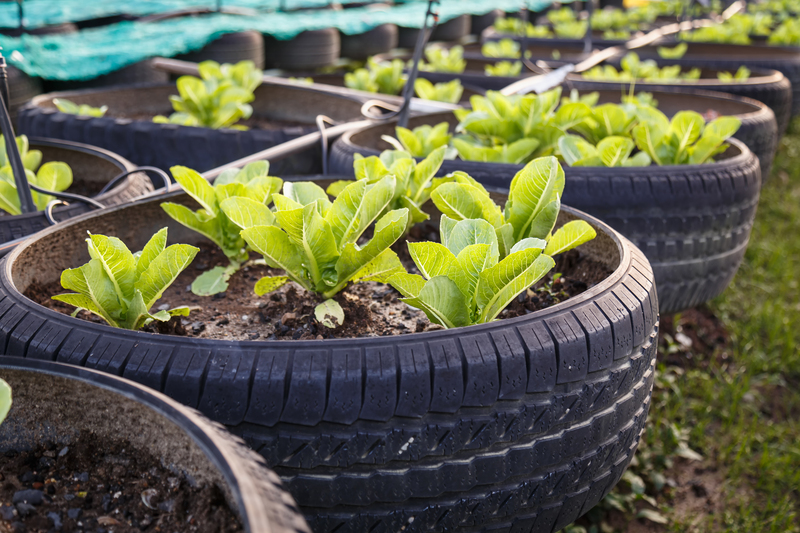Harnessing Renewable Energy from Diverse Waste Types
The quest for renewable energy sources has become a significant priority as the global demand for sustainable energy solutions surges. By understanding the potential of converting various waste types into renewable energy, we can not only address issues of waste management but also significantly contribute to a cleaner, greener planet.
Understanding Renewable Energy from Waste
Typically, waste contributes to environmental degradation, but when managed correctly, it holds the potential to become a pivotal source of renewable energy. The process of converting waste into energy can be performed using several advanced technologies, each relevant to the type of waste and the desired energy output.
The Potential of Waste-to-Energy Conversion
Waste-to-energy (WtE) that includes converting municipal solid waste (MSW), agricultural residues, industrial waste, and even sewage sludge, can offer multiple benefits:
- Reduction in landfill waste.
- Decrease in greenhouse gas emissions.
- Generation of heat and electricity.
- Enhancement of resource circulation.

Categories of Waste for Energy Conversion
1. Municipal Solid Waste (MSW)
Municipal Solid Waste, commonly referred to as MSW, includes everyday items discarded by the public. This type of waste is abundant in urban areas and contains various organic and inorganic materials. The main methods for converting MSW into energy include incineration and anaerobic digestion.
2. Agricultural Waste
Farmers generate significant quantities of waste in forms such as crop residues, livestock manure, and other by-products. Converting these materials into energy involves processes like biogas production through aerobic composting or methane generation. This not only harnesses energy but also transforms agriculture's environmental footprint.
3. Industrial Waste
Industrial processes yield a vast amount of waste, including chemicals, plastics, and combustible materials. By leveraging modern technologies like gasification and pyrolysis, industries can transform these wastes into usable energy forms, simultaneously addressing waste management and enhancing energy security.
4. Sewage and Sludge
Urban wastewater treatment facilities grapple with large volumes of sewage and sludge. With technologies such as anaerobic digestion and thermal hydrolysis, these previously hazardous elements turn into productive energy sources, mitigating environmental hazards and generating bioenergy like methane.
Technologies for Waste-to-Energy Conversion
To effectively respond to the challenge of turning waste into renewable energy, it's crucial to comprehend the technologies involved. Below are some core technologies leveraged in waste-to-energy processes:
Incineration
One of the oldest but efficient methods, incineration, involves burning waste materials at high temperatures. This process significantly reduces waste volume and enables the production of steam that can be used to generate electricity. Despite its effectiveness, concerns over emissions require careful deployment and the integration of filtration systems.
Gasification
Gasification involves heating organic materials to high temperatures in an oxygen-limited environment, converting them into syngas--a combustible gas mixture. This syngas can be utilized to produce electricity or further refined into transportable biofuels, offering versatile renewable energy possibilities.
Pyrolysis
Pyrolysis is similar to gasification but occurs in a completely oxygen-free environment, resulting in by-products like bio-oil, syngas, and bio-char. These products have various applications ranging from liquid fuel to soil amendments, making pyrolysis a robust option for waste valorization.
Anaerobic Digestion
This method is particularly effective for organic waste types. Anaerobic digestion converts biological material into methane-rich biogas in the absence of oxygen. The biogas produced can be used for electricity generation, while the remaining digestate serves as a nutrient-rich fertilizer.
Environmental and Economic Benefits of Waste-to-Energy
Embracing waste-to-energy provides a range of environmental and economic benefits:
- Reduced pollution and greenhouse gas emissions: Diminished reliance on fossil fuels curtails air pollutants.
- Resource efficiency: Efficient energy recovery from waste optimizes materials usage.
- Job creation: Establishing waste-to-energy plants stimulates local economies through job opportunities.
- Energy security: Diversifying the energy mix reduces dependency on foreign energy resources.

Challenges and Future Directions
Despite the advantages, waste-to-energy technologies pose several challenges, such as high initial costs, technical intricacies, and public perceptions regarding emissions from incineration. However, ongoing research and innovation continue to pave the way for more efficient and eco-friendly techniques.
Looking forward, integrating digital technologies, like the Internet of Things (IoT) and artificial intelligence (AI), could revolutionize waste-to-energy mechanisms. Enhanced waste tracking, sorting, and processing systems will ensure swifter adaptation and integration into modern energy strategies.
Conclusion
The potential of harnessing renewable energy from waste is immense. It offers a dual solution: tackling burgeoning waste challenges and fostering sustainable energy generation. By capitalizing on the full spectrum of diverse waste types, societies can tread a path towards a sustainable and environmentally harmonious future.
Investing in and advancing waste-to-energy technologies is not merely an alternate energy strategy, but an essential component of the global effort to combat environmental degradation and achieve energy sustainability for future generations.